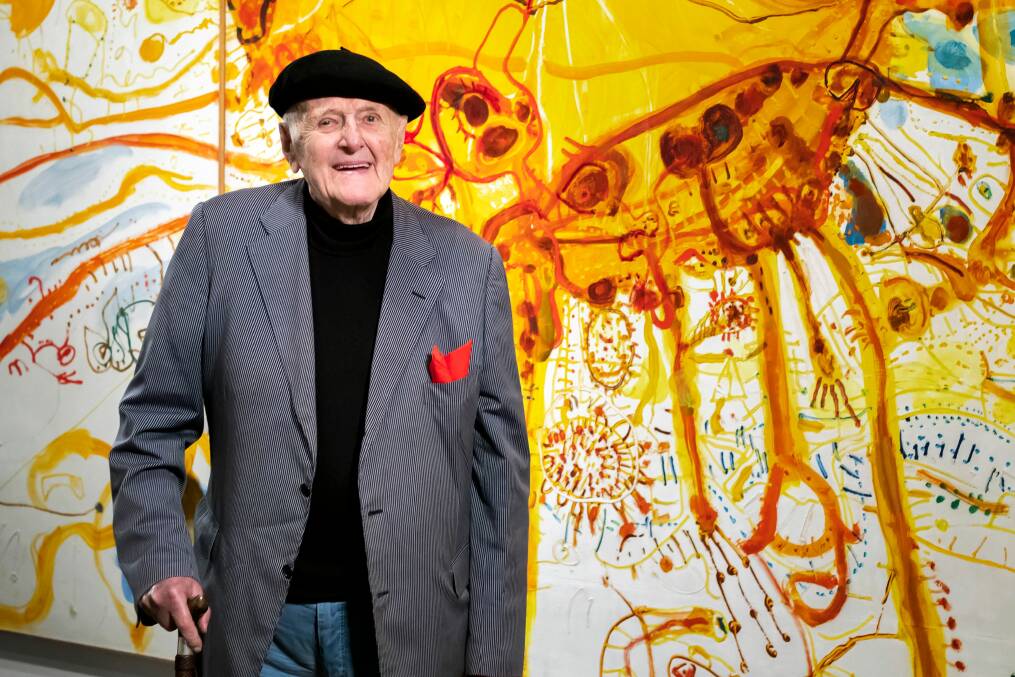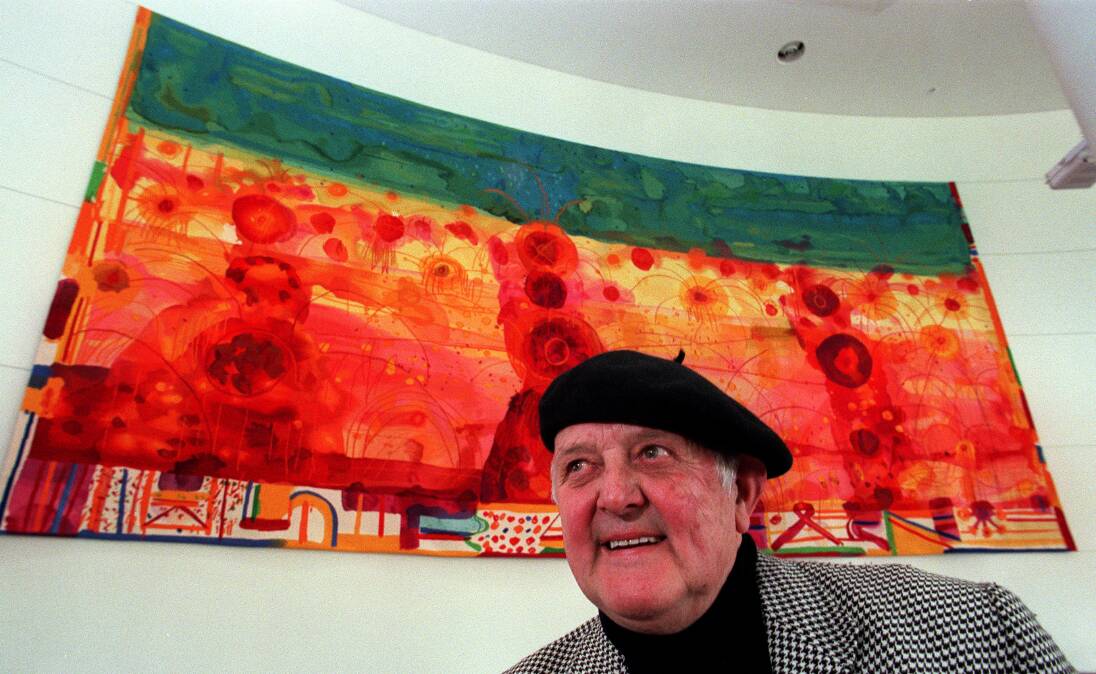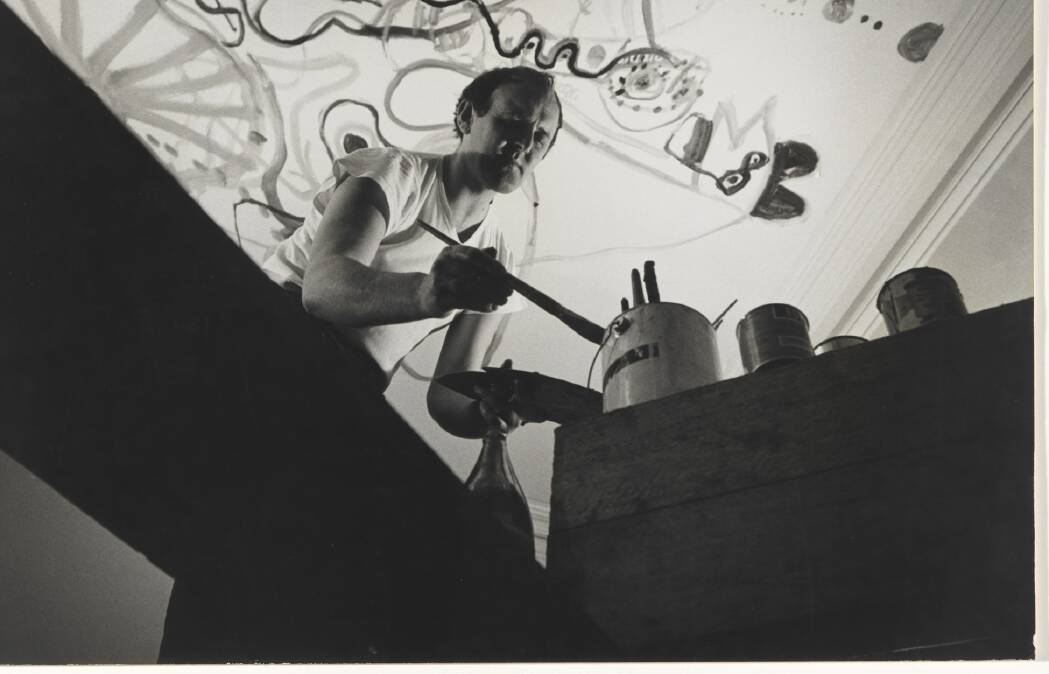Tributes have been made to one of Australia's most prominent artists, John Olsen, who died at the age of 95.
"John made an outstanding contribution to Australian art," Deborah Hart, curator of Australian art at the National Gallery, said.
"For more than half a century, he expressed his passionate engagement with the natural world, bringing inspiration to thousands of people."
He was on the gallery's council.
Some of his works are in Canberra. The NGA has his oil painting, Sydney Sun (or King Sun). The Department of Foreign Affairs and Trade had another work depicting the fierce Australian sun.

His large oil paintings depicted different aspects of the wild Australian landscape and waterscape. They ranged from the red interior in all its starkness to the greens and blues of the coast. Frogs often featured. Many of his oil paintings became prints which adorned countless walls across the country.
The artist's son and daughter, Tim and Louise Olsen, said their father was "celebrated globally for his 60-year career".
They mentioned "his distinctive use of colour and his lyrical depiction and love of Australia's vast interior". They said he was painting in his Southern Highlands studio up until Saturday.
They described him as "a born bon vivant and raconteur known for his rakish beret and quick wit".

"Our father was a titan of the art world and beloved by many in Australia and overseas but to us he was Dad, in all the wonderful humaneness, complexity and humanity that word encapsulates," they said from their father's rural property 120 kilometres southwest of Sydney.
John Olsen was born in Newcastle. His career spanned more than 60 years. His work was displayed in galleries across the nation and overseas. He was a winner of the Archibald, Wynne and Sulman prizes.
Among his most acclaimed works is Salute to Five Bells, which hangs in the Sydney Opera House.
A tribute to his long career will be beamed onto the building's sails next month during the Vivid Sydney festival.
The artist was able to watch an animation of the projection in the days before he died, a tribute which his son said completed the circle of his father's life.
"There were tears rolling down his face to see a mock-up of the Opera House with his works merging into each other and how the animators were able to bring his birds and his frogs to life," Tim Olsen said.
The artist spoke last year about his affinity with rural and remote Australia, having long captured its wild terrain.
"To be an Australian landscape painter is to be an explorer," he said after donating several of his works to a regional NSW gallery.
"There is so much to look at and observe about the Australian landscape, how it varies from tropical to the coastal fringe, and the interior.
"It's so multiple. It's a beautiful animal, that landscape."
After receiving an Order of Australia in 2001, Olsen described art as a form of compulsion, which he started developing at age four.

"Artists are born, not made," he said.
He won the Archibald for self-portrait in 2005, the Wynne Prize in 1969 and 1985, and the Sulman Prize for in 1989.
He had an OBE.







